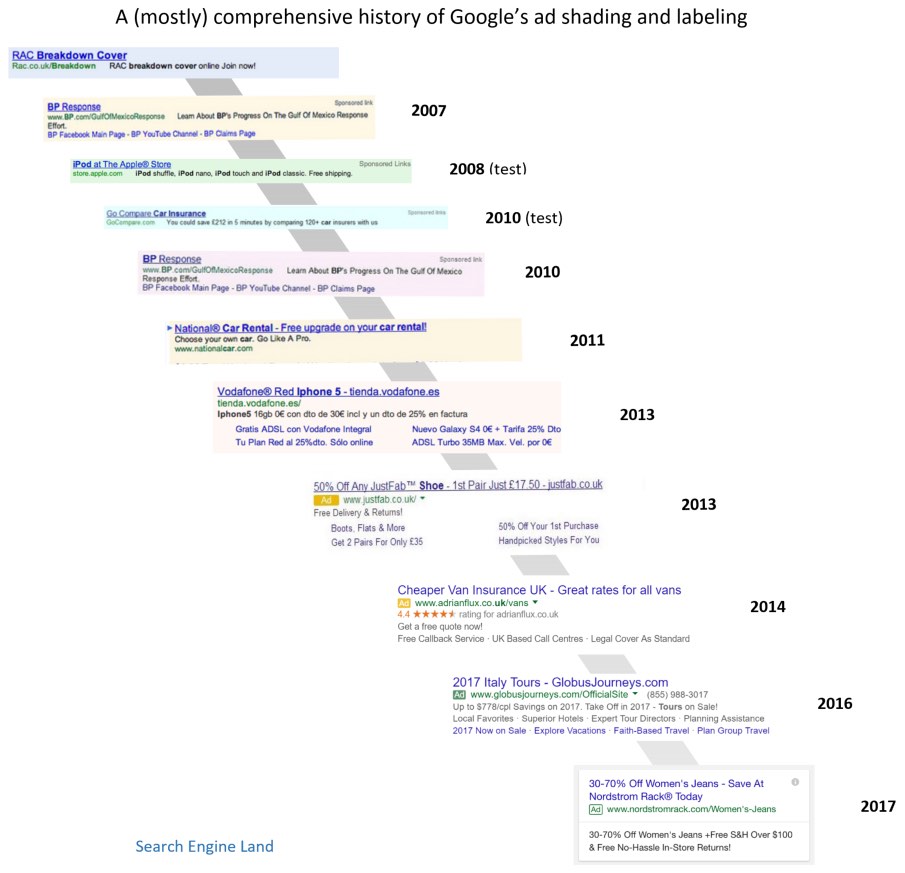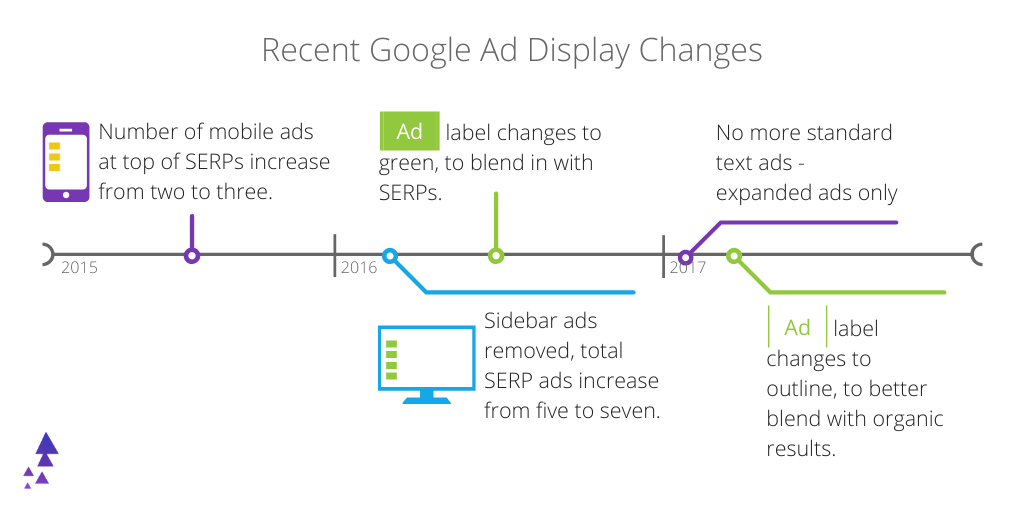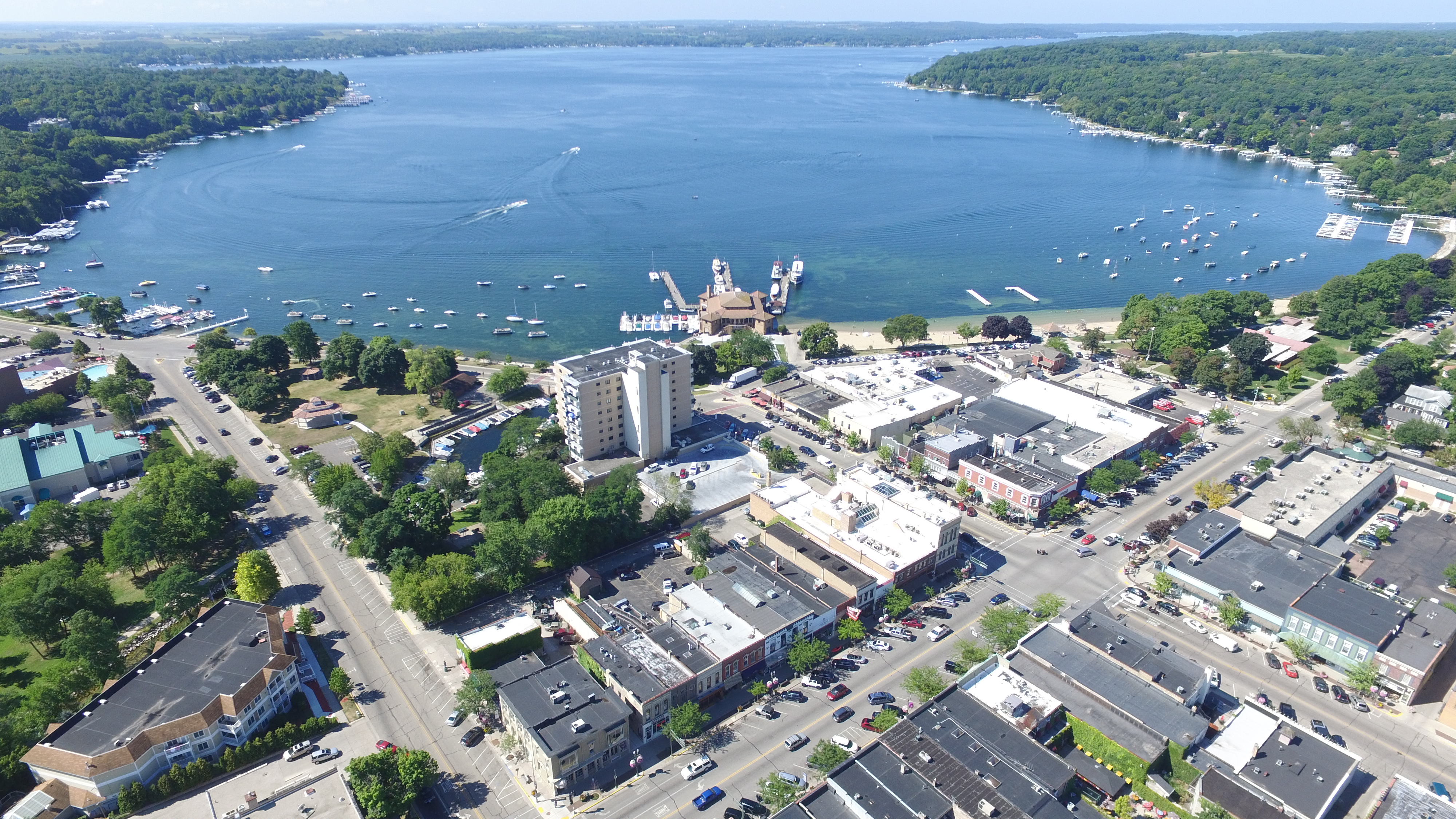How SEOs Can Respond to Google’s New Ad Label: A Thin Green Line Between Google and Your SEO Strategy
Google has a long history of regularly updating how ads are displayed in search results, including the most recent change to how ads display on search result pages. This time, the solid green “Ad” label was replaced with a new version that—unless you’re looking closely—almost blends in with the URL displayed next to it.

Visual history from Search Engine Land
This is another in a long line of recent changes designed to drive more clicks to ads than organic results. With ads becoming less distinguishable from organic results and taking up more real estate above the fold, SEOs need to be prepared to measure and combat the resulting organic traffic loss.
Recent Notable Ad Display Changes
According to Merkle’s most recent Digital Marketing Report, click-through rates on search ads were in decline in early 2015. However, by Q4 of 2015, ad clicks had grown 26%, and they grew another 20% by the end of 2016. A variety of SERP and ad display changes led to the recovery of ad clicks. Over the last 10 years, Google has slowly been visually conforming paid ad spots to organic search snippets. Some of the most recent changes have not only camouflaged ads, but given them some preferential treatment:
- In mid-2015, Google increased the number of ads displayed above search results in mobile from two to three, and doubled the size of product listing ads.
- In early-2016, Google removed right-rail ads on desktop, increased the number of ads appearing above page-one results on desktop from three to four, and increased the number of ads appearing at the bottom of desktop results from two to three.
- In mid-2016, Google added a fourth ad above organic results on mobile, and began testing Expanded Text Ads, allowing advertisers to include 45 additional characters of text. It also changed the “Ad” label from yellow to solid green—adopting the same color used to display URLs in both paid and organic results.
- In early 2017, Google removed the option for advertisers to create standard text ads, allowing only Expanded Text Ads to be utilized for future campaigns. Additionally, the company may be testing even longer ads, with some users reporting availability of a new field that allows for an additional 80 characters of text.

In addition to conforming the visual design to organic results, expanded text is giving paid ad spots more real estate on SERPs. And it’s working for Google.
When changing the ad label from yellow to green—and then from solid green to a green border—Google reported that user testing proved people had no trouble distinguishing between paid and organic results after these changes. But Merkle’s research paints a different picture:
Virtually all of the changes Google has made to help drive increased ad growth have, in effect, harmed organic search growth.
How to Combat Ad-Driven Traffic Loss
If more ads are appearing above organic results—and if those ads are easy to mistake for organic listings—it may be tempting to abandon SEO and focus budget and effort on SEM instead. But doing so would be a poor decision.
Even with significant growth, ad clicks still claim a miniscule portion of overall traffic: of the 60% of searches that result in clicks, fewer than 3% result in clicks on paid listings.
Of the 60% of searches that result in clicks, fewer than 3% result in clicks on paid listings.
The better approach is to monitor for traffic changes that could be the result of increased ad clicks, and take steps to recover from any lost traffic:
- Monitor traffic and average positions for important and/or high ranking pages. If you notice traffic loss without a corresponding position degradation, perform searches for the queries that normally drive users to those pages.
- Make note of the display of SERPs for those queries. If queries result in ad-laden SERPs, it’s possible that the loss of traffic could be the result of Google’s ad display changes. Conversely, changes in traffic could be the result of a new search carousel or a new featured snippet. Analyzing the items that appear above your result will help determine the cause of traffic loss.
If traffic loss is the result of search ads, you have two options:
- Consider updating the content of pages to target queries that don’t populate ads. In many cases, long-tail keywords don’t populate as many ads as broader keywords, so consider optimizing content for longer queries.
- Use SEO and SEM in partnership instead of isolation. If a piece of content ranks highly for a generic query that populates lots of ads, a paid listing that points to the same piece of content—and targets the same user intent—can stand out against generic ads that point to bottom-of-the-funnel landing pages for top-of-the-funnel queries.
Additionally, there are other strategies that can help make up for lost traffic—regardless of the cause of the decline:
- Optimize content for the featured snippet box.
- Improve the SERP snippet to stand out on the page and drive clicks.
- Explore options to syndicate your content to grow your audience without Google.
Responding to Search Ad Display Changes
As an advertising-funded search engine, it’s no surprise that Google aims to make ads more clickable and less obvious, and these changes will not be the last in those attempts. But while ads pose more of a threat to SEO today than they did two years ago, SEO remains the ultimate driver of search traffic.
By proactively measuring and reacting to ad display changes, your organic results will continue to drive traffic in spite of ad display changes.
What's Next?
Profound Strategy is on a mission to help growth-minded marketers turn SEO back into a source of predictable, reliable, scalable business results.
Start winning in organic search and turn SEO into your most efficient marketing channel. Subscribe to updates and join the 6,000+ marketing executives and founders that are changing the way they do SEO:
And dig deeper with some of our best content, such as The CMO’s Guide to Modern SEO, Technical SEO: A Decision Maker’s Guide, and A Modern Framework for SEO Work that Matters.






